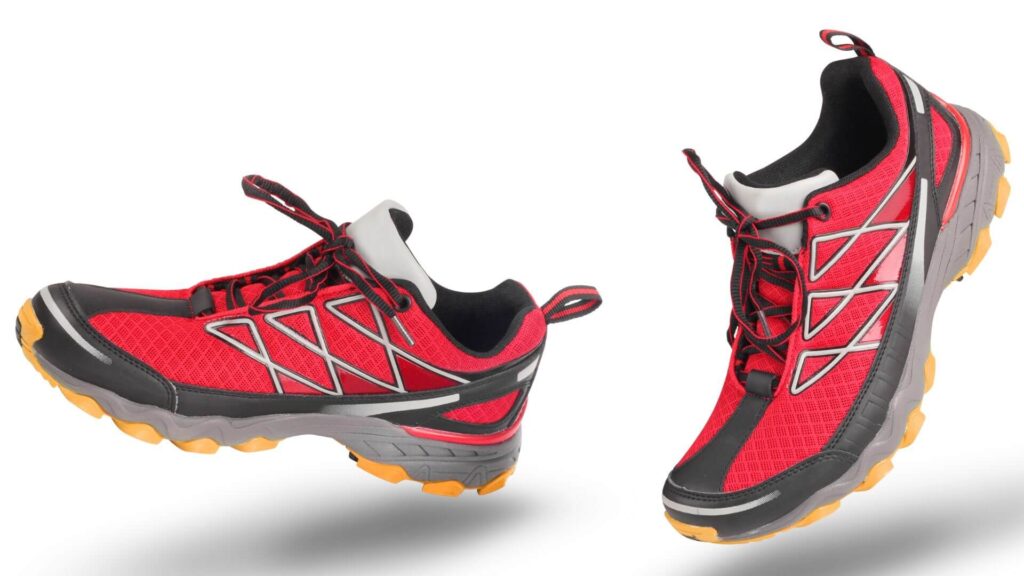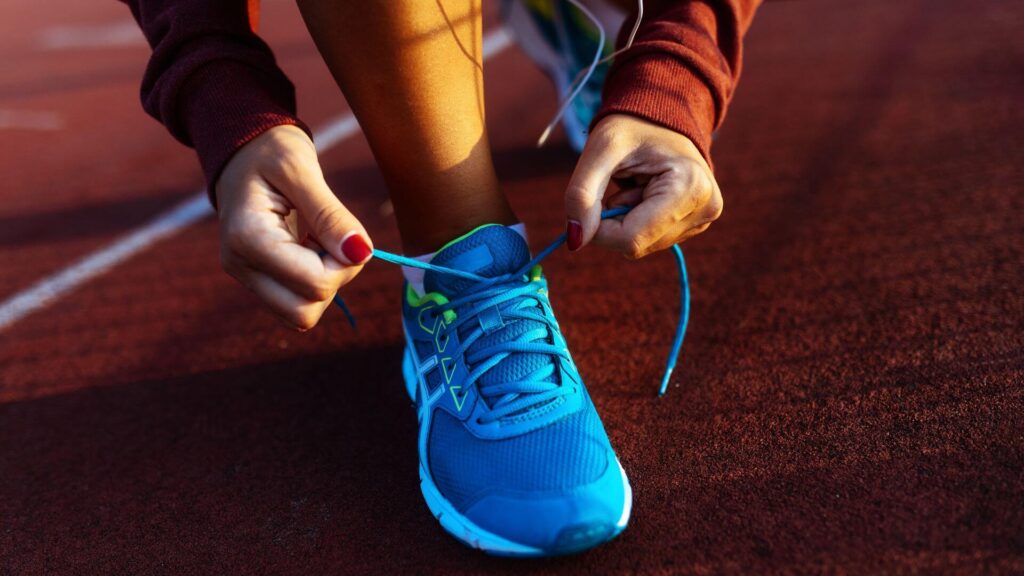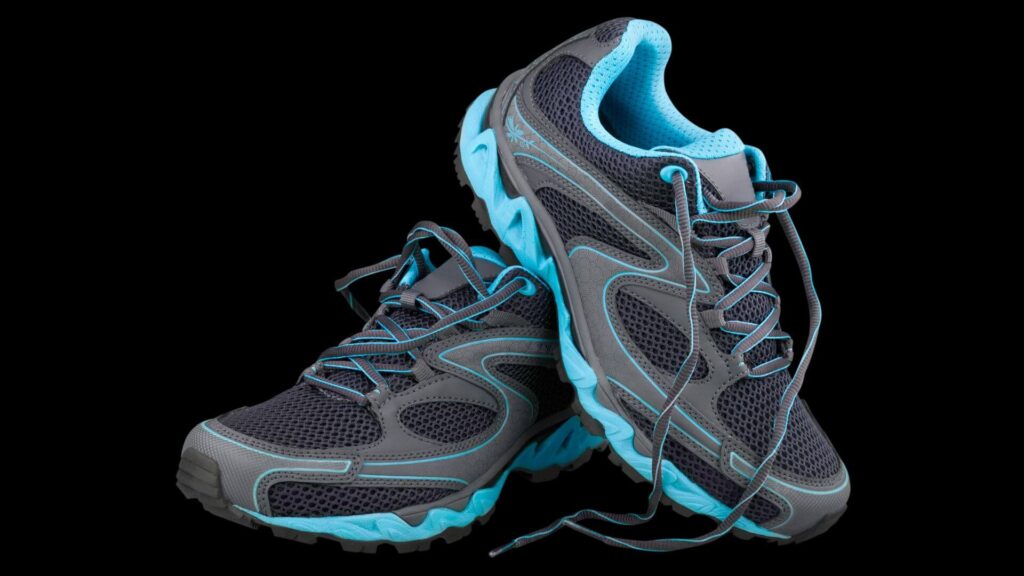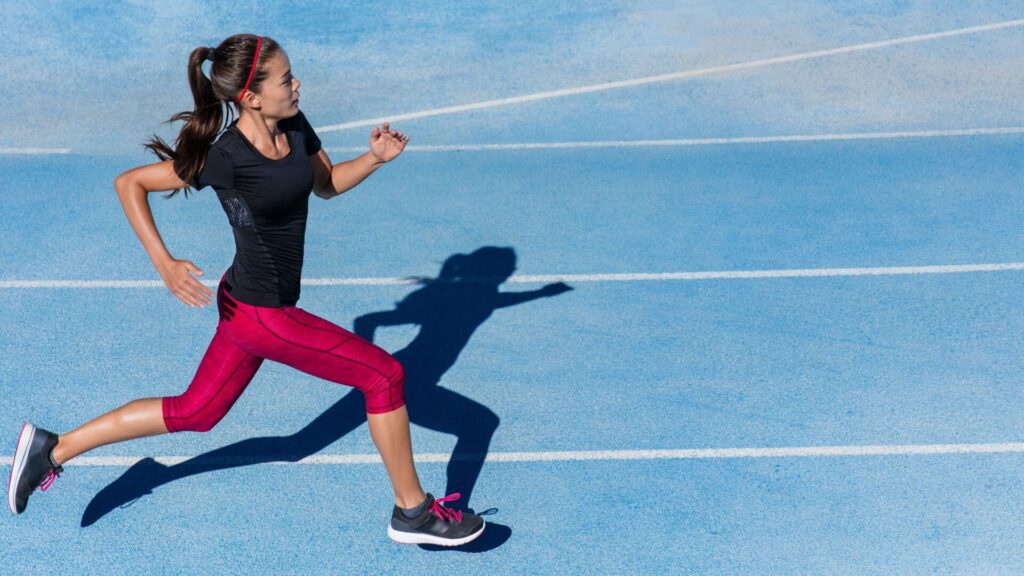How To Choose Running Shoes – Buying The Right Running Shoes
Did you know that the average person takes approximately 8,000 to 10,000 steps per day? For runners, that number can quickly skyrocket, putting immense strain on their feet and joints. This is why choosing the right running shoes is not just a matter of style but a critical decision that can impact your running performance and long-term health.
Whether you’re a seasoned marathoner or just starting out on your running journey, investing in the right pair of running shoes is essential. But with so many options out there, how do you navigate the buying process and ensure you make the best choice for your unique needs? How To Choose The Best Running Shoes?
In this comprehensive guide, we will walk you through all the factors to consider when buying running shoes. From understanding your foot type and gait to selecting the right shoe category for your running style, we’ll provide you with the knowledge and insights you need to make an informed decision. Get ready to lace up and hit the ground running!
Key Takeaways
- Choosing the right running shoes is crucial for comfort and injury prevention.
- Wearing the wrong running shoes can lead to various health issues.
- Factors to consider include shoe fit, running style, and the running you do.
- There are various types of running shoes, each designed for specific foot types and running needs.
- Shopping at running specialty stores and trying on shoes are essential steps in the buying process.
Why Is Choosing the Best Running Shoe Important?

When it comes to running, choosing the right shoes is crucial for both performance and injury prevention. The right pair of running shoes can make a significant difference in your overall running experience. They provide support, comfort, and protection to your feet, helping you achieve your running goals while minimizing the risk of injuries.
The benefit of Wearing the Right Pair of Running Shoes
Wearing the right pair of running shoes offers several benefits. First and foremost, they improve your performance by providing the necessary cushioning and support to absorb the impact of each step. This helps reduce fatigue and increases your endurance on the road or trail. Additionally, the right shoes can help you maintain proper alignment and promote a natural running stride.
Furthermore, wearing the correct running shoes reduces the risk of injuries. They provide stability and cushioning to your feet, ankles, and joints, preventing common running injuries such as plantar fasciitis, shin splints, and knee pain. With the right shoes, you can run comfortably and confidently, knowing that your feet are well-protected.
How Wearing the Wrong Running Shoes Can Affect Your Health
Conversely, wearing the wrong running shoes can negatively impact your health. Ill-fitting or unsupportive shoes can lead to various foot problems, including blisters, corns, and calluses. They can also cause more serious issues such as Achilles tendinitis or stress fractures.
Moreover, wearing shoes that do not provide proper support and cushioning can lead to biomechanical imbalances, affecting your overall body alignment. This can result in pain and discomfort not only in your feet but also in your ankles, knees, hips, and lower back. It’s essential to choose running shoes that cater to your specific foot type and running needs to avoid these health issues.
How Often Should You Replace Your Running Shoes?
Replacing your running shoes at the right time is equally important as choosing the right pair initially. Over time, running shoes lose their cushioning and support, which affects their performance. As a general guideline, it is recommended to replace your running shoes every 300-500 miles or every 6-12 months, depending on your running frequency and the condition of your shoes.
Worn-out running shoes may contribute to injuries and discomfort, as they no longer provide the necessary support and shock absorption. Regularly replacing your running shoes helps maintain optimal performance, support, and cushioning, ensuring a safe and enjoyable running experience.
Factors to Consider When Choosing Running Shoes
When it comes to choosing running shoes, there are several important factors to consider. The right pair of shoes can make a significant difference in your running experience, optimizing comfort and reducing the risk of injuries. Here are some key factors you should keep in mind:
Shoe Fit: Why Proper Fit is Crucial for Running
The most critical factor in choosing running shoes is finding the proper fit. A well-fitted shoe ensures comfort, support, and stability while preventing discomfort and injuries. When trying on shoes, make sure there is enough space for your toes to move freely and that your foot feels secure in the shoe. It is recommended to get your feet measured professionally to determine the correct size.
Running Style: Choosing Shoes that Match Your Running Stride
Considering your running style is another crucial factor in selecting the right running shoes. Your running style is determined by how your feet land while running, and it can be classified as neutral, overpronation, or underpronation (supination). Each running style requires specific shoe features to optimize comfort and prevent injuries. Understanding your running style can help you choose shoes that provide the right level of support and stability.
Type of Running: Different Shoes for Different Types of Workouts

Lastly, the type of running or workouts you plan to do should be taken into account. Different types of activities require different features in running shoes. For example, if you primarily run on roads, you may need shoes with good cushioning for impact absorption.
On the other hand, if you often run on trails, you’ll want shoes with more traction and durability to handle uneven terrain. Cross-training shoes are designed for a variety of activities and provide versatility and support for different types of workouts.
By considering these factors, you can find running shoes that suit your individual needs, ensuring a comfortable, enjoyable, and injury-free running experience.
Types of Running Shoes
When it comes to choosing the right pair of running shoes, several types are available, each designed to cater to specific foot types and running needs. Understanding the different types of running shoes can help you make an informed decision and find the perfect fit for your feet.
1. Neutral Running Shoes: Best for High Arches and Underpronation
Neutral running shoes are designed for runners with high arches and underpronation. They provide a good balance of cushioning and flexibility to absorb shock and provide support where it’s needed most. These shoes promote a more natural foot motion and can help prevent injuries caused by inadequate shock absorption.
2. Stability Running Shoes: Best for Normal Arches and Neutral Pronation
Stability running shoes are suitable for runners with normal arches and neutral pronation. They offer a blend of cushioning, support, and durability. These shoes provide a bit more stability than neutral shoes and help control mild overpronation, ensuring a smooth and comfortable running experience.

3. Motion Control Running Shoes: Best for Low Arches and Overpronation
Motion control running shoes are specifically designed for runners with low arches and overpronation. They provide maximum stability and support to control excessive inward rolling of the foot. These shoes offer extra cushioning and reinforced support to help align the foot and prevent injuries caused by overpronation.
4. Minimalist Running Shoes: Best For Mimic Barefoot Running by Providing Minimal Cushioning and Support
Minimalist running shoes are for those seeking a barefoot-like running experience. These shoes have minimal cushioning, low heel-to-toe drop, and a lightweight design. Minimalist shoes promote a natural running gait, allowing your feet to move and flex more freely. It is important to gradually transition into minimalist shoes to prevent injuries.
5. Trail Running Shoes: Best for Off-road Running on Uneven Terrain
Trail running shoes are designed to handle the challenges of off-road running on uneven terrain. They feature durable outsoles with aggressive traction for better grip on trails. These shoes also have added protection, such as toe caps and rock plates, to guard against debris and sharp objects encountered on the trail.
6. Racing Flats: Best for Competitive Racing Events
Racing flats are lightweight and responsive shoes designed for competitive racing events. They prioritize speed and efficiency over cushioning and support. Racing flats have minimal cushioning and a thin sole, allowing for a more natural and efficient stride. They are best suited for experienced runners who want to maximize their performance in races.
7. Cushioned Running Shoes: Best for Long-distance Running or Runners Seeking Extra Comfort
Cushioned running shoes provide ample cushioning and shock absorption to enhance comfort during long-distance running. These shoes are ideal for runners who prioritize comfort and require extra cushioning to reduce the impact on their joints. Cushioned shoes are also suitable for runners with a heavier build.
| Type of Running Shoe | Best For |
| Neutral Running Shoes | High arches and under pronation |
| Stability Running Shoes | Normal arches and neutral pronation |
| Motion Control Running Shoes | Low arches and overpronation |
| Minimalist Running Shoes | Mimicking barefoot running |
| Trail Running Shoes | Off-road running on uneven terrain |
| Racing Flats | Competitive racing events |
| Cushioned Running Shoes | Long-distance running or extra comfort |

Shopping for Running Shoes – Shoe Stores
Shopping for running shoes can be overwhelming, but there are specific places where you can find a wide selection. One of the best options is to visit running specialty stores, which have knowledgeable staff who can help you find the right fit and provide expert advice.
Where to Shop for Running Shoes
When it comes to buying running shoes, it’s important to choose a reputable store that specializes in running footwear. Here are some of the best places to shop for running shoes:
- Running specialty stores: These stores have staff trained to analyze your foot shape, size, and arch type to recommend the most suitable shoes for your needs. They also offer a wide selection of brands and models.
- Sporting goods stores: Many sporting goods stores have dedicated running sections where you can find a variety of running shoe options. While they may not have the same level of expertise as specialty stores, they can still provide a decent selection to choose from.
- Online retailers: If you prefer the convenience of shopping from home, several reputable online retailers offer a wide range of running shoes. However, keep in mind that buying online may not give you the opportunity to try on the shoes before purchasing.
Regardless of where you choose to shop, it’s essential to prioritize stores that have a good reputation and offer a wide range of options to ensure you find the perfect pair of running shoes.
How to Find the Right Fit (Running Store)
When visiting a running store, you’ll want to make sure you find the right fit for your feet. The staff at the store can help you with this process. Here are some steps to follow:
- Measure your feet: The staff will measure the length and width of your feet to determine your correct shoe size. This is important as shoe sizes can vary across brands.
- Analyze your gait: They will also analyze your gait, or the way you walk or run, to identify any pronation issues or other factors that might affect your shoe selection.
- Try on multiple pairs: It’s recommended to try on various pairs of shoes to compare the fit and feel. Walk or run in them to get a better sense of how they perform.
By going through these steps and seeking expert advice, you can ensure that you find running shoes that fit you properly and provide the necessary support and comfort.
Tips for Trying on Running Shoes: Get the Right Fit
When trying on running shoes, there are a few tips you should keep in mind to ensure you get the right fit:
- Try on both shoes: Always try on both the left and right shoes to ensure they fit evenly.
- Wear appropriate socks: Wear the type of socks you would typically wear while running to ensure an accurate fit.
- Walk or run in them: Take a few steps or jog around the store to assess how the shoes feel and perform. Pay attention to any discomfort or pressure points.
- Consider different brands and models: Don’t limit yourself to one brand or model. Other shoes may fit differently, even within the same size, so it’s worth trying out a variety to find the best fit.
Following these tips will give you a better chance of finding running shoes that provide the right fit and support for your individual needs.

Special Considerations for Trail Running Shoes
Trail running shoes require specific considerations that differ from road running shoes. When selecting trail shoes, it’s essential to look for certain features to ensure optimal performance and protection on rugged terrains. Here are some key aspects to consider:
What to Look for in Trail Shoes
When choosing trail running shoes, you should prioritize the following features:
- Durable Outsoles with Good Traction: Look for shoes with rugged outsoles made from durable rubber compounds for excellent traction on various surfaces.
- Enhanced Stability and Support: Trail shoes typically feature added stability technologies like firmer midsoles and supportive overlays to provide better stability on uneven terrain.
- Protective Toe Caps: To shield your toes from rocks, roots, and other obstacles, opt for shoes with reinforced toe caps.
- Water Resistance: If you often encounter wet and muddy conditions, choose trail shoes with water-resistant materials like Gore-Tex® to keep your feet dry.
Types of Trail Running Shoes
There are different types of trail running shoes tailored to specific trail conditions. Consider the following options:
- Shoes for Hard-Packed Trails: Designed for relatively flat and smooth trails, these shoes offer a balance between cushioning and traction.
- Shoes for Rocky Terrains: These shoes feature protective rock plates and aggressive outsoles for superior grip and foot protection on rugged and rocky surfaces.
- Shoes for Muddy Conditions: Specifically designed with deep lugs and flexible outsoles, these shoes provide excellent traction and prevent mud build-up.
Features of Trail Running Shoes
In addition to the specific aspects mentioned above, trail running shoes come with other features that enhance performance and comfort, including:
- Lightweight construction for agility and reduced fatigue during long trail runs.
- Breathable mesh uppers to promote ventilation and prevent moisture buildup.
- Responsive cushioning absorbs impact and provides a comfortable ride on uneven terrain.
- Ankle support for added stability and injury prevention.

Running Shoe Length and Width Size Charts
Finding the right shoe size is crucial for a comfortable fit. To help you determine your size, we have provided length and width size charts for both women’s and men’s running shoes. These charts will guide you in selecting the correct size based on your foot measurements.
Women’s Running Shoe Length Size Chart
Use the following chart to find your correct length size for women’s running shoes:
Here’s a general women’s running shoe length size chart:
| US Size | EU Size | UK Size | Foot Length (inches) | Foot Length (cm) |
|---|---|---|---|---|
| 5 | 35-36 | 3 | 8.5″ | 21.6 cm |
| 5.5 | 36 | 3.5 | 8.75″ | 22.2 cm |
| 6 | 36-37 | 4 | 8.875″ | 22.5 cm |
| 6.5 | 37 | 4.5 | 9.0625″ | 23 cm |
| 7 | 37-38 | 5 | 9.25″ | 23.5 cm |
| 7.5 | 38 | 5.5 | 9.375″ | 23.8 cm |
| 8 | 38-39 | 6 | 9.5″ | 24.1 cm |
| 8.5 | 39 | 6.5 | 9.6875″ | 24.6 cm |
| 9 | 39-40 | 7 | 9.875″ | 25.1 cm |
| 9.5 | 40 | 7.5 | 10″ | 25.4 cm |
| 10 | 40-41 | 8 | 10.1875″ | 25.9 cm |
| 10.5 | 41 | 8.5 | 10.3125″ | 26.2 cm |
| 11 | 41-42 | 9 | 10.5″ | 26.7 cm |
| 11.5 | 42 | 9.5 | 10.6875″ | 27.1 cm |
| 12 | 42-43 | 10 | 10.875″ | 27.6 cm |
Please note that shoe sizes may vary slightly between different brands and models. It’s essential to refer to the manufacturer’s specific size chart for accurate sizing information.
Men’s Running Shoe Length Size Chart
Use the following chart to find your correct length size for men’s running shoes:
Here’s a general men’s running shoe length size chart:
| US Size | EU Size | UK Size | Foot Length (inches) | Foot Length (cm) |
|---|---|---|---|---|
| 6 | 39 | 5.5 | 9.25″ | 23.5 cm |
| 6.5 | 39-40 | 6 | 9.5″ | 24.1 cm |
| 7 | 40 | 6.5 | 9.625″ | 24.4 cm |
| 7.5 | 40-41 | 7 | 9.75″ | 24.8 cm |
| 8 | 41 | 7.5 | 9.9375″ | 25.4 cm |
| 8.5 | 41-42 | 8 | 10.125″ | 25.7 cm |
| 9 | 42 | 8.5 | 10.25″ | 26 cm |
| 9.5 | 42-43 | 9 | 10.4375″ | 26.7 cm |
| 10 | 43 | 9.5 | 10.5625″ | 27 cm |
| 10.5 | 43-44 | 10 | 10.75″ | 27.3 cm |
| 11 | 44 | 10.5 | 10.9375″ | 27.9 cm |
| 11.5 | 44-45 | 11 | 11.125″ | 28.3 cm |
| 12 | 45 | 11.5 | 11.25″ | 28.6 cm |
| 12.5 | 45-46 | 12 | 11.5625″ | 29.4 cm |
| 13 | 46 | 12.5 | 11.875″ | 30.2 cm |
| 14 | 47 | 13.5 | 12.1875″ | 31.1 cm |
| 15 | 48 | 14.5 | 12.5″ | 31.8 cm |
Please note that shoe sizes may vary slightly between different brands and models. It’s essential to refer to the manufacturer’s specific size chart for accurate sizing information.

Women’s Running Shoe Width Size Chart
Determining the right width size is vital for a comfortable fit. Use the following chart to find your correct width size for women’s running shoes:
| US Size | EU Size | Foot Length (inches) | Foot Length (cm) | Width (inches) | Width (cm) |
|---|---|---|---|---|---|
| 5 | 35-36 | 8.5″ | 21.6 cm | 3.2″ | 8.1 cm |
| 5.5 | 36 | 8.75″ | 22.2 cm | 3.3″ | 8.4 cm |
| 6 | 36-37 | 8.875″ | 22.5 cm | 3.4″ | 8.6 cm |
| 6.5 | 37 | 9.0625″ | 23 cm | 3.4″ | 8.6 cm |
| 7 | 37-38 | 9.25″ | 23.5 cm | 3.4″ | 8.6 cm |
| 7.5 | 38 | 9.375″ | 23.8 cm | 3.5″ | 8.9 cm |
| 8 | 38-39 | 9.5″ | 24.1 cm | 3.5″ | 8.9 cm |
| 8.5 | 39 | 9.6875″ | 24.6 cm | 3.5″ | 8.9 cm |
| 9 | 39-40 | 9.875″ | 25.1 cm | 3.6″ | 9.1 cm |
| 9.5 | 40 | 10″ | 25.4 cm | 3.6″ | 9.1 cm |
| 10 | 40-41 | 10.1875″ | 25.9 cm | 3.7″ | 9.4 cm |
| 10.5 | 41 | 10.3125″ | 26.2 cm | 3.7″ | 9.4 cm |
| 11 | 41-42 | 10.5″ | 26.7 cm | 3.7″ | 9.4 cm |
| 11.5 | 42 | 10.6875″ | 27.1 cm | 3.8″ | 9.7 cm |
| 12 | 42-43 | 10.875″ | 27.6 cm | 3.8″ | 9.7 cm |
Please note that shoe widths may vary slightly between different brands and models. It’s essential to refer to the specific size chart provided by the manufacturer for accurate sizing information.
Men’s Running Shoe Width Size Chart
To find your correct width size for men’s running shoes, refer to the following chart:
| US Size | EU Size | Foot Length (inches) | Foot Length (cm) | Width (inches) | Width (cm) |
|---|---|---|---|---|---|
| 6 | 38-39 | 9.25″ | 23.5 cm | 3.9″ | 9.9 cm |
| 6.5 | 39 | 9.5″ | 24.1 cm | 4.0″ | 10.2 cm |
| 7 | 39-40 | 9.625″ | 24.4 cm | 4.0″ | 10.2 cm |
| 7.5 | 40 | 9.75″ | 24.8 cm | 4.1″ | 10.5 cm |
| 8 | 40-41 | 9.9375″ | 25.4 cm | 4.1″ | 10.5 cm |
| 8.5 | 41 | 10.125″ | 25.7 cm | 4.2″ | 10.7 cm |
| 9 | 41-42 | 10.25″ | 26.0 cm | 4.3″ | 10.9 cm |
| 9.5 | 42 | 10.4375″ | 26.7 cm | 4.3″ | 10.9 cm |
| 10 | 42-43 | 10.5625″ | 26.8 cm | 4.4″ | 11.2 cm |
| 10.5 | 43 | 10.75″ | 27.3 cm | 4.4″ | 11.2 cm |
| 11 | 43-44 | 10.9375″ | 27.9 cm | 4.5″ | 11.4 cm |
| 11.5 | 44 | 11.125″ | 28.3 cm | 4.6″ | 11.7 cm |
| 12 | 44-45 | 11.25″ | 28.6 cm | 4.6″ | 11.7 cm |
| 12.5 | 45 | 11.5625″ | 29.4 cm | 4.7″ | 12.0 cm |
| 13 | 45-46 | 11.875″ | 30.2 cm | 4.8″ | 12.2 cm |
| 14 | 46-47 | 12.1875″ | 31.0 cm | 4.9″ | 12.4 cm |
| 15 | 47-48 | 12.5″ | 31.8 cm | 5.0″ | 12.7 cm |
Please note that these size charts provide general guidelines. It’s always recommended to try on the shoes and assess their fit before making a final purchase.
Conclusion: How To Choose The Best Running Shoes
Choosing the right running shoes is crucial for a comfortable and injury-free running experience. By considering factors such as shoe fit, running style, and the running you do, you can find the perfect pair of shoes that meet your needs. When it comes to shoe fit, it’s essential to try on shoes at a running store and consult with knowledgeable staff. They can measure your feet, analyze your gait, and recommend the appropriate size and type of shoe.
The running style also plays a significant role in choosing the right running shoes. Whether you have a neutral stride, overpronate, or underpronate, there are shoes specifically designed to support and accommodate your running mechanics. By choosing shoes that align with your running style, you can enhance your performance and reduce the risk of injuries.
Additionally, consider the type of running you do when selecting your shoes. Road running, trail running, and cross-training require different types of shoes that offer varying levels of support, stability, and durability. Understanding the demands of your chosen activities will help you find shoes suitable for your specific needs.
In conclusion, by paying attention to shoe fit, running style, and running, you can choose the right running shoes that provide optimal comfort, support, and performance. Seek advice from experts, try on different options, be bold, and invest in a quality pair of running shoes. With the right shoes on your feet, you’ll be well-equipped to enjoy your runs and achieve your fitness goals.

FAQs: Which Running Shoes Should I buy?
Why is it important to choose the best running shoe?
Choosing the best running shoe is important because it can improve your performance, reduce the risk of injuries, and increase comfort during your runs.
What are the benefits of wearing the right pair of running shoes?
Wearing the right pair of running shoes can improve performance, provide proper support, cushioning, and stability, and reduce the risk of injuries such as foot pain, shin splints, and knee problems.
How can wearing the wrong running shoes affect your health?
Wearing the wrong running shoes can lead to various health issues, including foot pain, shin splints, and knee problems. It can also negatively impact your running performance and overall running experience.
How often should you replace your running shoes?
It is recommended to replace your running shoes every 300-500 miles or every 6-12 months, depending on the wear and tear and how frequently you use them.
Why is shoe fit crucial for running?
Proper shoe fit is crucial for running because it ensures comfort, prevents blisters and injuries, and provides optimal support and stability during your runs.

How do you choose shoes that match your running style?
To choose shoes that match your running style, you need to determine whether you have a neutral stride, overpronate, or underpronate. This can be done through a gait analysis or consulting with knowledgeable staff at a specialty running store.
What type of running shoes should I choose based on the running I do?
The running shoes you choose depend on whether you do road running, trail running, or cross-training. Road running shoes and trail running shoes are designed for different terrains, so choosing the appropriate type is essential for optimal performance.
What are the different types of running shoes available?
The different types of running shoes available include neutral running shoes, stability running shoes, motion control running shoes, minimalist running shoes, trail running shoes, racing flats, and cushioned running shoes. Each type is designed to cater to different foot types and running needs.
Where can I shop for running shoes?
You can shop for running shoes at specialty running stores, where you can find a wide selection of running shoes and get expert advice from knowledgeable staff.
How can I find the right fit when buying running shoes at a running store?
To find the right fit when buying running shoes at a running store, it is important to try on both shoes, walk or run in them, and pay attention to how they feel. The staff at the running store can also help you find the right fit by measuring your feet and analyzing your gait.
What should I look for in trail running shoes?
When looking for trail running shoes, you should consider features such as durable outsoles with good traction, enhanced stability and support, protective toe caps, and water resistance. These features are essential for running on uneven and challenging terrains.
What are the different types of trail running shoes?
The different types of trail running shoes include shoes for hard-packed trails, rocky terrains, and muddy conditions. Every kind of trail running shoe is designed to provide the necessary grip and protection based on the specific trail conditions.
What are the running shoe length and width size charts for women and men?
The running shoe length and width size charts provide guidance in selecting the correct shoe size based on your foot measurements. These charts are available for both women’s and men’s running shoes and help ensure a proper and comfortable fit.
Source Links
Posted in
Welcome to Fitweightlogy! We are an optimum review website of all the best products associated with weight loss, healthy life, fitness, tips, and motivations. We are a quickly developing organisation given that we typically put our visitors first. A customer-focused experience has regularly been our objective, and we value our comprehensive policies, which have placed us in a domain well beyond our competitors. On this website, we assist our visitors in reaching their desired weight, appearance goals and live a healthy lifestyle, as well as save money and time by meticulously researching and evaluating the market, assessing the available products, and producing informative recommendations based on factors such as quality, availability, price and more. Furthermore, our passion is to assist you in choosing the best possible product through our product reviews.








